Common Loon: Description, Types, Pictures, & Fun Facts
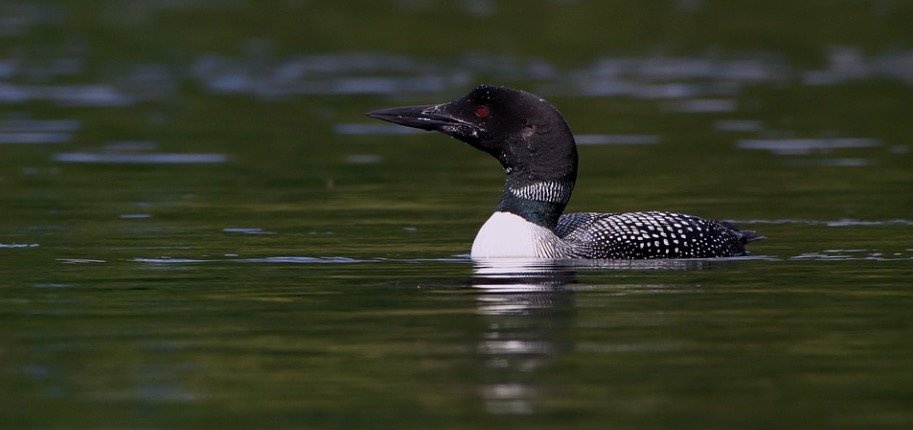
Table of Contents
Scientific Classification of Common Loon
- Kingdom: Animalia
- Phylum: Chordata
- Class: Aves
- Order: Gaviiformes
- Family: Gaviidae
- Genus: Gavia
- Scientific name: Gavia immer
Location of Common Loon
- Europe
- North America
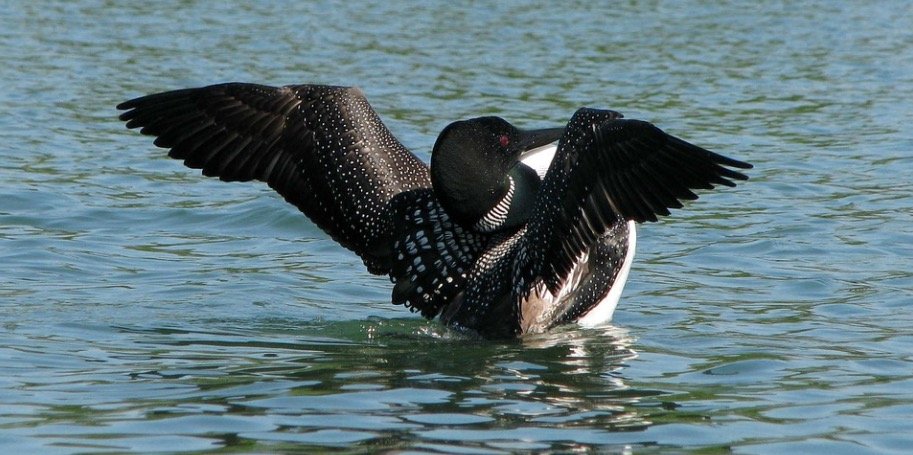
Common Loon Description
The common loon is a bird that belongs to the family gaviidae. However, the bird feels awkward on land but the common loon has great hunting skills and it is a great hunter in water.
Usually, the bird is found in the waters of cold weather. The bird prefers to learn diving before it learns to fly. The common loon is a monogamous bird, which pairs for up to a decade, and every year he came back in his old nest with his mating partner.
Several native North American legends have a description about common loons and the Canadian one-dollar coin has also faced the common buzzard. The birds are commonly distributed in Canada but due to pollination, the birds are eliminated from the regions of eastern North America.
Due to their goofy walking style, the birds have been named loon but the English name of the bird is “great northern diver”, which may describe it in a better way.
Incredible Facts About Common Loon!
1. Deep diver- As their name indicates, the common loons have great diving skills, which they use to catch fish and other prey. The birds usually dive up to 200 feet underwater for hunting.
2. Already famous- The popularity of the bird can be assumed by the fact that they are featured in the one-dollar coin of Canada, known as “loonie”.
3. Frequent flyer- During migration, the common loons fly for very long distances and cover hundreds of kilometers.
4. Loud and proud- the common loon is a territorial bird that claims its territory by making distinctive sounds such as “Nobel”.
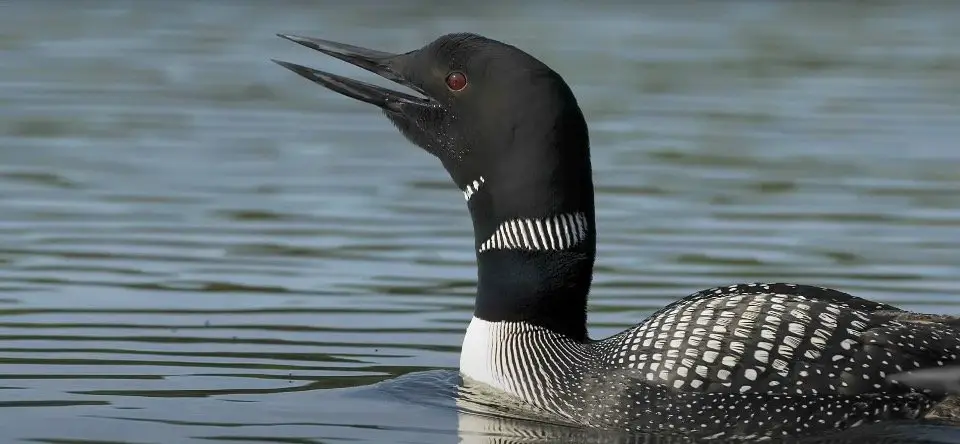
Other Species of Common Loon
Gavia immer is the scientific name of the common loon. The bird is known as “Great Northern Diver” in English. The genus name gavial is derived from a Latin word, which means seabird and the word immer is a Norwegian word that means “ash”. It is also believed that the species name ‘immer’ is derived from a Latin word ‘immergo’ or ‘immersus’, which means “ submerged” or “diving”.
Appearance and Behavior of Common Loon
The appearance of a common loon is like other ducks. However, the bill of common loon is more pointed that appears like the bill of a songbird. The bird comprises black-colored feathers which form a grid-like pattern with white spots.
The pattern expands to its wings and throat and the underbelly of the bird is white-colored. The persons who live near the habitats of common loons can easily hear their sounds.
A distinctive yodel, a wailing sound, and a hooting noise are some vocalizations made by the common loons. The birds use these sounds for declaring their nesting sites or while finding a mate.
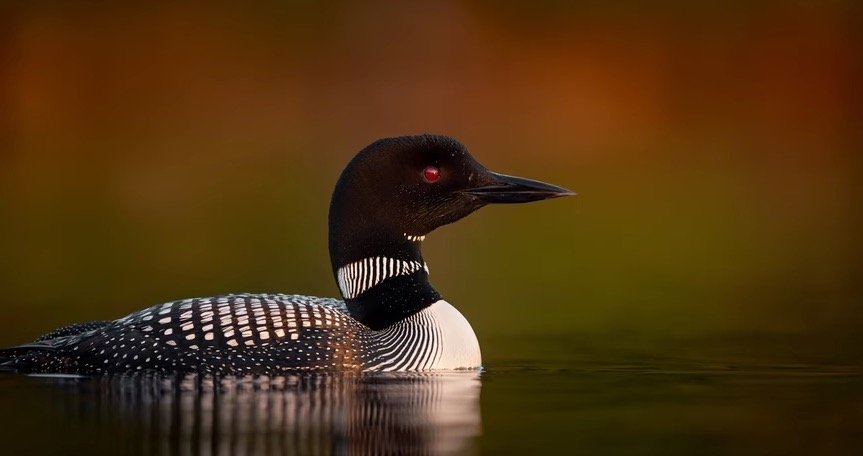
Feet on Common Loon
As compared to the other seabirds, the common loon has feet set further back on its body. Thus the position of their feet helps them in swimming and diving perfectly. However, their walking style looks awkward and due to this walk, the birds are named “loon”.
The bird can be easily identified and look different from other ducks due to their unique feet. The feet of the bird don’t allow it to the skin by their feet as other ducks, thus the common loon skims on its belly on water.
Habitat of Common Loon
The common loon prefers to live in waters of colder areas. The birds are commonly distributed in New England and Canada. Besides this, some other areas such as Alaska, Greenland, and Scotland also have a population of common loons.
During the summer, the birds can be found near small ponds and during winters, the birds migrate towards large lakes and coastal areas where they form nests.
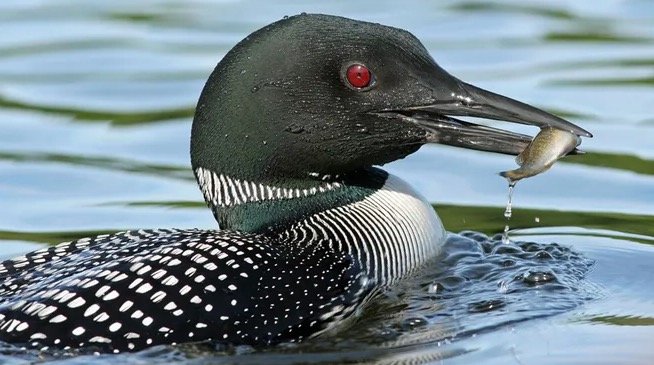
Diet of Common Loon
Fish is the major diet of the common loon. The common loon is a great diver, which helps it in hunting fishes from water. Depending upon the habitat of the common loon, the species of fish may vary among them, which they eat.
Near coastal areas, the birds feed on rockfish, sea trout, flounder, and herring. However, when the birds live near freshwater bodies such as ponds they consume bass, perch, sunfish, pike, and trout. During hunting, the birds start by poking its head under the surface of the water.
The bird can dive as deep as 200 feet after seeing any prey species underwater. The bird gulp whole fish if the fish is smaller while if they found any large fish, they carry it to a place where they can eat them.
Predators and Threats of Common Loon
Humans are posing the biggest threat to the common loon. However, still they are not facing any severe threat. Common loons are disappearing from eastern North America due to large water pollution in these areas.
Although, the bird is listed as the “least concerned” species by the international union for conservation of Nature. The common loon is not in any danger now and also not facing any threat of extinction. Small mammals are also a threat to common loons.
They eat their eggs sometimes and to protect their eggs from mammals, the common loon changes its nesting site when it feels any danger.
How Pollution Affects Common Loon?
The common loon is facing threats from toxic water. The bird usually prefers the same kind of water to live, where he was born. Thus some researches revealed that the common loon finds the same polluted water bodies to build his nest when he was born in a polluted water body.
The common loon will prefer the same polluted lake to live in weather, the lake has not had sufficient prey species such as fish or it is not good enough for hatching new chicks.
Reproduction, Babies, and Lifespan of Common Loon
The common loon is a monogamous bird, which means the birds mate with the same mating partner every year. The life span of the bird is about 10 years. During his life after reaching sexual maturity, he breeds once a year.
Every year, two baby chicks are produced by the female loon. The number of chicks is much less as compared to other seabirds or waterbirds. For example, another water bird, named a mallard duck lays around 13 eggs per year.
Generally, the bird prefers to build its nest in a coastal area or near the edge of the water. They use sticks, grasses, and reeds to form their nest. Every year, the mating pair use the same nest but if their nests are getting damaged by any predator, the male move their nest to any safer place.
The common loon reaches sexual maturity at the age of two years. During early summer, the birds find their mate and then both mating partners circle their nesting site and make a yodeling noise to stake off the site.
The female loon lays two eggs per year, which are incubated for around one month. Incubation is done by both the parents and they sit in the eggs in turns. Both mother and father chicks are involved in parental care and feed them.
The chicks learn swimming and diving within only a week but they take nearly three months to learn flying. After growing chicks, the male and female loon separately move for migration. At the start of next summer, the mating partners return to their nesting grounds and mate again.
Population of Common Loon
According to the International Union for the conservation of Nature (IUCN), the estimated population of common loons is around 640,000 worldwide. A major proportion of their population resides in North America and Canada.
The population of the common loon in Europe is about 2600 individuals. According to the IUCN, the population of common loon is declining in Europe, while it seemed that the birds are slightly increasing their population in North America.









